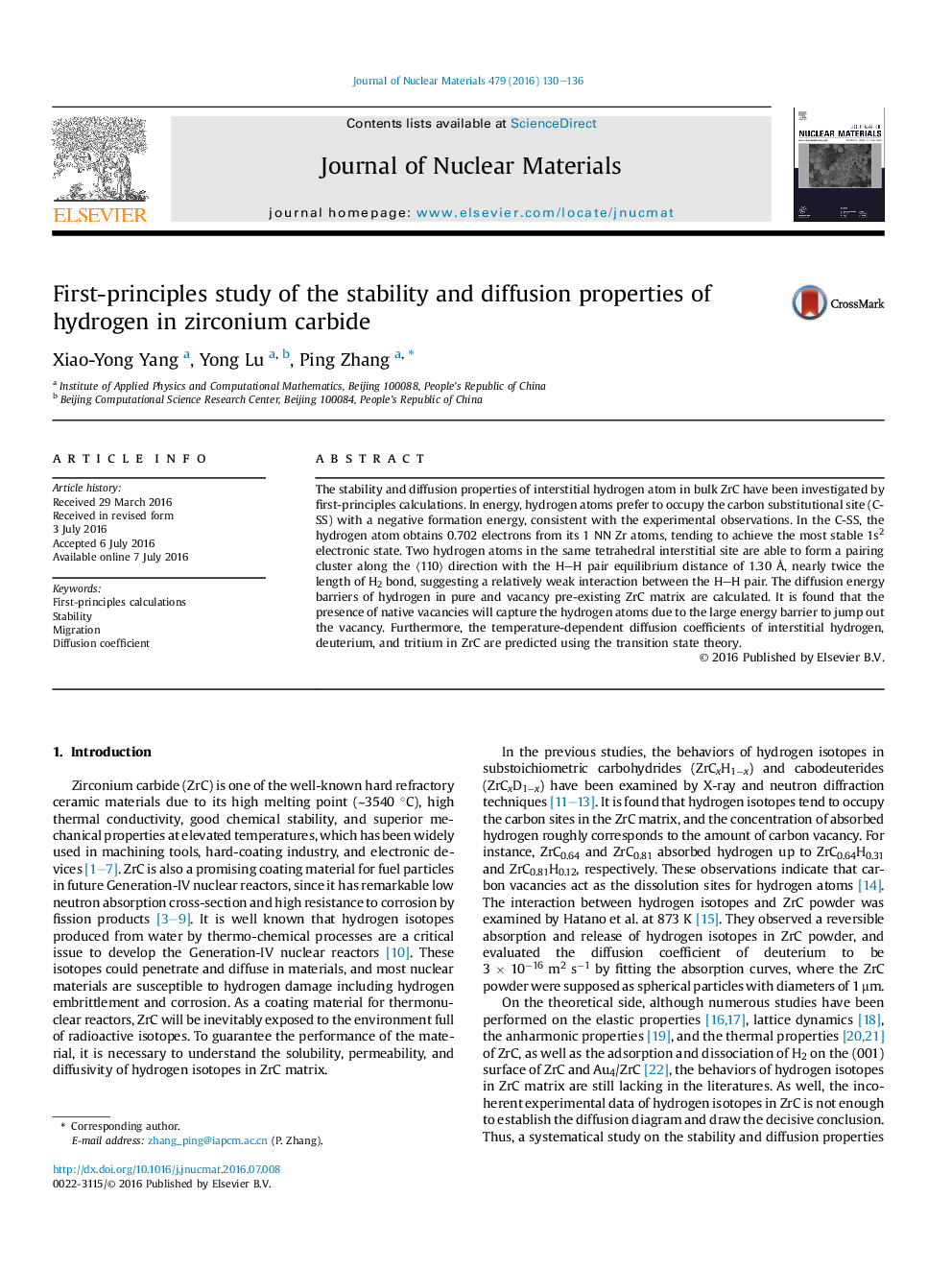| Article ID | Journal | Published Year | Pages | File Type |
|---|---|---|---|---|
| 7963867 | Journal of Nuclear Materials | 2016 | 7 Pages |
Abstract
The stability and diffusion properties of interstitial hydrogen atom in bulk ZrC have been investigated by first-principles calculations. In energy, hydrogen atoms prefer to occupy the carbon substitutional site (C-SS) with a negative formation energy, consistent with the experimental observations. In the C-SS, the hydrogen atom obtains 0.702 electrons from its 1Â NN Zr atoms, tending to achieve the most stable 1s2 electronic state. Two hydrogen atoms in the same tetrahedral interstitial site are able to form a pairing cluster along the ã110ã direction with the HH pair equilibrium distance of 1.30Â Ã
, nearly twice the length of H2 bond, suggesting a relatively weak interaction between the HH pair. The diffusion energy barriers of hydrogen in pure and vacancy pre-existing ZrC matrix are calculated. It is found that the presence of native vacancies will capture the hydrogen atoms due to the large energy barrier to jump out the vacancy. Furthermore, the temperature-dependent diffusion coefficients of interstitial hydrogen, deuterium, and tritium in ZrC are predicted using the transition state theory.
Related Topics
Physical Sciences and Engineering
Energy
Nuclear Energy and Engineering
Authors
Xiao-Yong Yang, Yong Lu, Ping Zhang,
